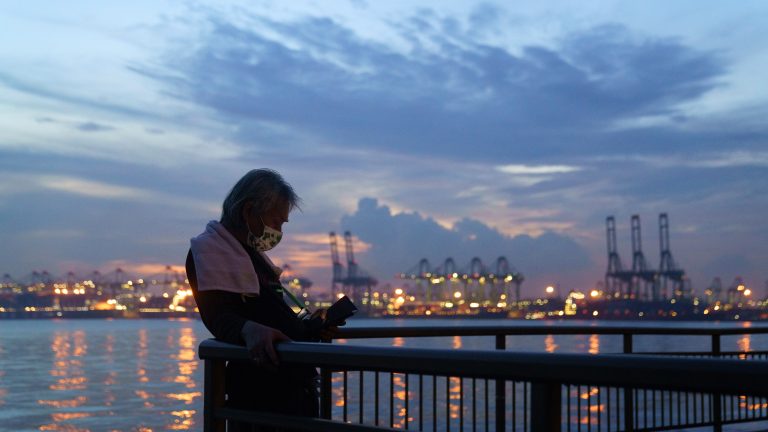Mining Resistance From Alberta to Argentina
At the end of last year, at the height of the Omicron variant spread, an important battle was being fought for clean water and a healthy environment, the value of which has only become clearer during the last couple of years.
At one of the many frontiers of mineral extraction in the Patagonian province of Chubut, Argentina, Indigenous Mapuche-Tehuelche communities and citizens groups flooded the streets for days just before Christmas 2021.
A U.S.-Canadian mining company, Pan American Silver, had been pressuring legislators there to overturn a nearly 20-year prohibition on open-pit metal mining and the use of cyanide in mineral processing, which threatens precious water supplies. When lawmakers obliged and zoned for mining where the company wants to operate on the province’s plateau, people went to the streets by the thousands and faced violent police repression.
But the people prevailed, and within a few days succeeded in getting the zoning law overturned.
This is just one example of the important frontline struggles that have fought hard to keep organizing during the pandemic despite the difficult conditions. This story and others are collected in a new report: No Reprieve for Life and Territory: COVID-19 and Resistance to the Mining Pandemic.
No Reprieve looks at how governments and mining companies took advantage of social constraints during the COVID-19 pandemic to increase their profits and declare mining “essential” for economic recovery and the energy transition.
This report focuses on case studies in nine Latin American countries: Mexico, Honduras, Panama, Colombia, Ecuador, Peru, Brazil, Chile, and Argentina. It was developed by the Coalition Against the Mining Pandemic-Latin America, part of a global network of environmental justice groups.
In nearly every case studied, Indigenous peoples and other mining affected communities faced intensified repression, criminalization, targeted violence, and militarization in response to their efforts to protect water and land from the long-term impacts of mining.
A Global Trend of Repression by Mining Companies
In the U.S., we are familiar with the criminalization and repression of movements for environmental justice, racial justice, and Indigenous rights at the behest of extractive industries.
Indigenous people fighting to defend and protect their land have been met with serious repression and legal persecution in the United States, including during the Enbridge Line 3, Line 5, and Standing Rock protests. The intense policing and militarization of movements has been accelerated by so-called “Critical Infrastructure Laws,” enforced by state governments. These laws conflate peaceful protest with acts of domestic terrorism and have been a key tool pushed for by the fossil fuel industry to expand oil and gas pipeline projects.
This echoes a global trend.
For years now international organizations documented industry pressure to contain resistance through repression and violence. “Activists in the global north are facing increased criminalization,” Adrien Salazar of the Grassroots Global Justice Alliance told CNN last year. Meanwhile, “environmental defenders in the global south are facing increasing risk of death.”
In 2021 alone, the Inter-American Commission of Human Rights found that 147 human rights activists had been murdered. In the first four months of 2022, 89 more had been murdered already.
A majority of the slain activists were land defenders, environmental activists, or Indigenous community members. According to the Human Rights Defenders and Civic Freedoms Programme, 36 percent of attacks on human rights defenders that the center has documented relate to the extractive sector.
This kind of repression ultimately costs people their health, lives, and well-being. At the same time, it undermines democratic systems and jeopardizes our environment.
Mining Companies Are Peddling False Solutions
During the pandemic, extractive industries have criminalized and threatened defenders or pressed their case for more repression by presenting themselves as important for economic recovery.
Despite the threats that metal mining poses to the land and water, No Reprieve documents how this industry repositioned itself as “essential” while benefiting from a rise in gold, silver, and copper market prices, leading some mining companies to make record-breaking profits.
Beyond Argentina, this trend was clearly demonstrated elsewhere in Latin America through policy changes that made mining permitting easier, relaxed environmental oversight, and provided tax breaks. A few countries, such as Panama and Ecuador, decreed special plans to make mining a central focus for economic reactivation.
Unlike in the United States, where repression often benefits fossil fuel industries foremost, Latin America has seen a rise in violent extractivism by companies arguing that the minerals they mine are necessary for renewable energy technology.
Globally, the installation of renewable energy infrastructure and the manufacture of electric vehicles is projected to increase demand for certain minerals and metals, such as lithium, cobalt, and nickel. This led to initiatives in countries such as Peru and Mexico making lithium extraction a strategic priority for the state.
These challenges point to the need for a just transition to renewable energy that doesn’t repeat the same abuses of the extractive industry. Whatever the mineral or metal, frontline and Indigenous communities still bear the brunt of harms from mineral extraction that are rarely addressed and which has given rise to broad resistance.
State favoritism toward the mining industry during the pandemic even led to the perception that it was a crisis made to suit the mining industry.
Iván Paillalaf, a member of the Mapuche-Tehuelche community of Laguna Fría Chacay Oeste in Chubut, believes “the crisis that currently exists in Chubut… is an intentionally designed crisis; a crisis that has been created precisely to try and impose this activity so that the people see no other way out other than mining.”
This does not mean that communities have viewed the pandemic itself as a conspiracy, but rather that they’ve seen how corporations and governments are taking advantage of the social and economic constraints that it created. This reaffirmed for them the urgent need to continue defending their communities and territories under these difficult conditions.
Heroic Resistance Across the Hemisphere
Even with these obstacles, these Latin American communities offer an inspiring example of resistance against difficult odds. Resistance remains strong in Chubut and across the hemisphere.
Despite the stay-at-home orders that hindered organizing efforts, a People’s Initiative to expand the prohibition on open pit mining in Chubut to include exploration and prospecting activities collected double the signatures required by law to be considered. This initiative was rejected without debate in 2021 before the legislature tried to overturn the existing ban. But the movement in Argentina is taking another run at it this year, aiming to collect 100,000 signatures.
North and South, repression and violence is taking place against those standing up to extractive industries. This is part of the extractive capitalist model that permits private corporate interests to overpower human rights, self-determination, and democracy..
The cases detailed in No Reprieve demonstrate a need to envision a future beyond the extractivist economy. During a pandemic and in the face of a climate crisis, the struggle to defend our territories and collective health is more essential now than ever.
This first appeared on FPIF.









